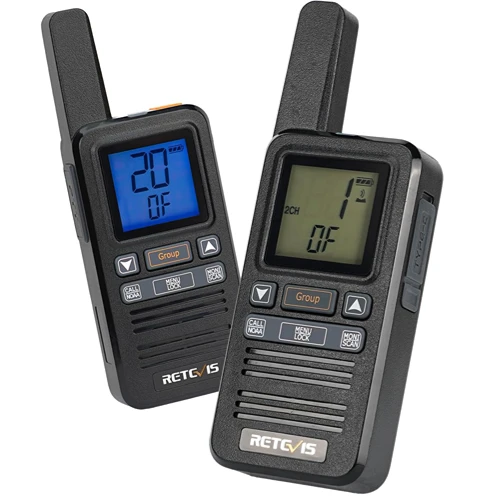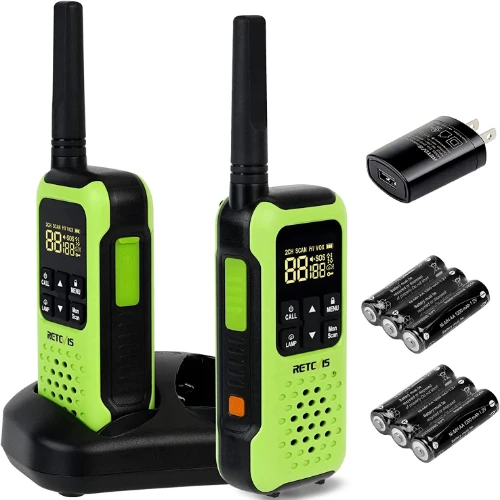Use NOAA Weather Walkie Talkie for Emergency Preparedness

Use NOAA Weather Walkie Talkie for Emergency Preparedness
Tornadoes are more common in the central United States, particularly during spring and early summer. At the same time, hurricanes are more prevalent along the Atlantic and Gulf coasts during hurricane season, which runs from June through November. To prepare for various unexpected severe weather and emergencies, it is important to have an emergency NOAA weather walkie talkie as a backup communication tool for safety.
Why Need NOAA Weather Radio?
The average cell phone tower can handle only a limited number of connections. During an emergency, too many calls or messages can overload your nearest tower, slowing down or blocking a life-saving warning. Having a NOAA weather radio gives you another source of alerts.
NOAA Weather Radio All Hazards (NWR) is the United State's nationwide network of radio stations that broadcast constant weather information straight from the local National Weather Service office. NOAA Weather Alerts cover a wide range of weather-related hazards and environmental events. Some of the most common hazards include Tornadoes, Hurricanes, Floods, Winter Storms, and Heatwaves.
Preparedness and time could save your life in severe weather or emergencies. With timely, life-saving alerts, those at home, off-grid, evacuating storm zones, etc. can enact their emergency plans and get to shelter. In the case of storms like tornadoes, time is precious. With NOAA Weather Radio, users get the alerts as soon as the National Weather Service issues them.Timely alerts can enable businesses to protect assets like vehicles and inventory and implement contingency plans to minimize disruptions. Additionally, advanced warnings can help emergency managers and first responders prepare for and respond more effectively to disasters, ultimately reducing the costs associated with recovery and rebuilding.
Benefits of Having NOAA Alerts On Walkie Talkies
Walkie talkies with built-in NOAA Weather Alert capabilities offer several advantages, particularly for outdoor enthusiasts, emergency responders, and individuals living in areas prone to severe weather events:
Convenience: Having NOAA alerts integrated into your walkie-talkie means you don’t need to carry a separate weather radio or rely on other devices to receive weather updates and alerts. This can be particularly useful for those engaged in outdoor activities, such as hiking, camping, or boating.
Enhanced Communication: In emergency situations, reliable communication is essential. Walkie-talkies provide a means of communication that is independent of cellular networks, which can be disrupted during severe weather events. By incorporating NOAA alerts, users can receive critical weather information directly on their walkie-talkie, enabling them to make informed decisions and communicate effectively with others in their group or team.
Increased Safety: Timely access to NOAA Weather Alerts can help ensure the safety of individuals and groups during outdoor activities or emergency situations. Users can take appropriate actions to protect themselves and others from potential hazards by receiving alerts on their walkie-talkies.
Several walkie talkie models on the market include built-in NOAA Weather Alert capabilities. You can choose according to different uses.
For Long-Range Communication
Retevis RB17P: This GMRS handheld radio offers 22 GMRS and 8 repeater channels, access to NOAA weather channels and alerts. It has a range of up to 2 miles and can connect to local repeaters for extended range. It has a convenient one-key SOS alarm button to meet your emergency needs. A 2200mAh large-capacity battery ensures there will be no trouble with power outages.

For Family Use
Retevis RB67: This license free walkie talkie offers 22 FRS channels, ready to use right out of the box. It is compact and lightweight, making it easy to carry with a lanyard or clip-on pocket/belt. It can receive NOAA alerts and has a convenient one-key group button to send out group calls to many people at once. A built-in 1600mAh i-ion battery ensures 30 hours of standby time, and it has a Type-C port to support multiple charging options.

For Outdoor Use
Retevis RT49P: This waterproof and floating two way radio is designed for use in outdoor environments and includes access to NOAA weather channels and alerts. It comes with 6 AA Ni-MH batteries and a charging tray, giving it multiple charging options. Once you are in distress, you can push the button “SOS” on the left side of the radio to send rescue calls immediately.

Thank you for reading this blog! If you have any questions, please leave your comments below. We are looking forward to your comments!
Related Blog: FRS vs GMRS vs MURS, Which One Should I Use?






